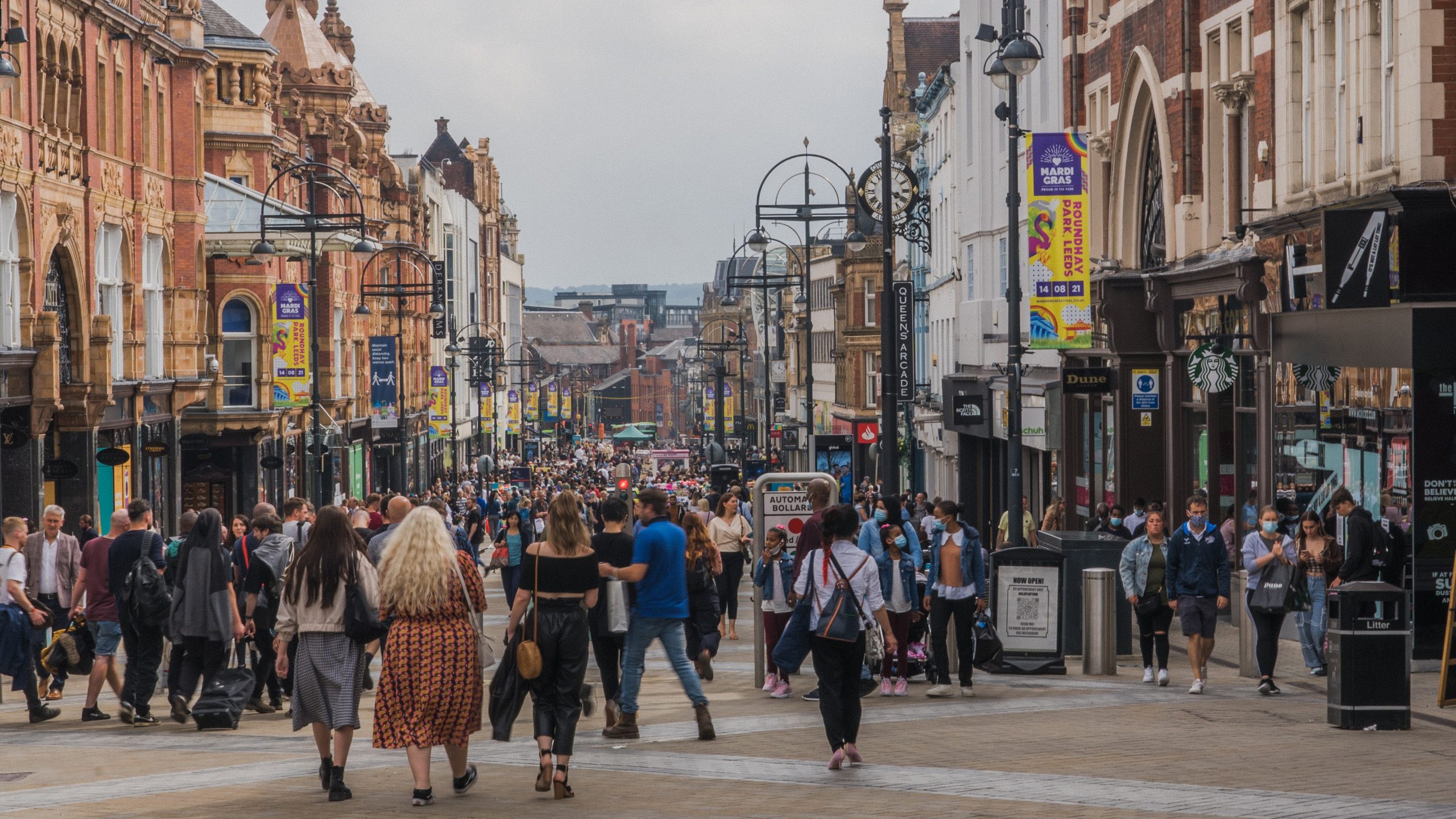
The pandemic dealt an almighty blow for traditional ‘bricks and mortar’ retail. During the first half of 2021, nearly 50 shops per day closed down in the UK.
The situation is still gloomy. Recent figures show footfall is down by 12.5% compared to pre-pandemic levels.
COVID-19 isn’t solely to blame, though.
Declining footfall has been plaguing our high streets long before the pandemic hit – caused by the rise of online shopping; economic crises; changing consumer culture; the shift to working from home, and competition from out-of-town retail outlets.
Catapulting customer expectations.
The implications of the pandemic have been far-reaching. In addition to declining footfall, another effect has emerged in the retail world: rapidly heightening customer expectations.
Why? Personalisation.
Over the last couple of years, shoppers have turned to the internet for retail therapy, exposing them to easy, quick personalised experiences.
And it’s fair to say many online retailers have nailed personalisation. Take SHEIN, for example. This (admittedly controversial) online fast fashion retailer sells direct to consumers.
SHEIN provide personalised product recommendations combined with a loyalty programme to attract and retain consumers. Despite employing a distant selling model, they offer frictionless experiences with easy delivery and returns. They also use advanced targeting to reach customers, leveraging social media to win shoppers in a specific mission.
Companies like SHEIN are changing the way consumers buy clothing – and accelerating rising customer expectations.
More exposure to personalisation throughout the pandemic means customers are demanding even more from shopping experiences. Examples include:
- Easy in-store and online navigation.
- Relevant product recommendations.
- Tailored messaging.
- Targeted promotions.
- Personal communications.
Is there a way forward for the high street?
Yep, you guessed it – the way forward has data at its core.
Retailers with bricks and mortar presences need to leverage data to deliver better, differentiated in-store experiences. They have to give a reason to encourage shoppers back into store and away from the new, laser-targeted world of online shopping.
How? We can think of a few ideas:
Taking an experiential approach to data.
To encourage greater footfall, shopping in store needs to deliver a better experience than ecommerce. It should be easy and enjoyable, whilst also delivering value and meeting customer expectations.
Shopping online cannot deliver the social experience of going into town with a partner, friends or family. The high street can use this to its advantage – by using customer and product data to capture consumers in a specific need state or mission when they choose to shop in store.
However, cross channel marketing is vital for bricks and mortar retailers. Competing with brands like SHEIN to showcase your products when a consumer is in the market to buy is still critical. You need to be in the consideration set. Then, it’s all about conversion to store – a reason to visit and try on clothes rather than order online and return.
Customer need states and missions are ways of unifying online and offline retail, so it’s crucial for retailers to build an in-depth understanding of them. From there, retailers need to ensure they’re front of mind for those needs and missions. Decision intelligence helps join the dots, providing retailers with valuable insights about their products – including how customers interact with, substitute, and purchase them.
Once they’ve captured customers in a particular need state or mission, the high street can deliver on experience. For instance; as supply chain costs increase, online retailers are starting to charge for delivery and returns. Bricks and mortar retailers can play into this, as consumers don’t pay either when they choose to shop in store. Shoppers can check sizes and fit before they buy, providing frictionless instant gratification.
Going beyond the transaction.
Retailers need to consider in store experiences over and above a transaction. What will encourage consumers to choose the hight street over the internet? What will draw passers-by into store?
Consider LUSH. Each store is geared towards first-rate customer experiences – from live demonstrations of popular products to friendly, knowledgeable service from team members. LUSH recently took this one step further by introducing mobile POS devices, allowing staff to provide personalised product information; reducing queues for tills, and creating a seamless shopping environment.
Similarly, Nike’s app promotes integrated online and offline experiences. Customers can use the app in store and at events to access exclusive benefits – this includes reserving items before arriving in store; redeeming location-based offers, and scanning products for further information, such as sizing and colour options. This is cross-channel personalisation in action.
Apps and data will become crucial to encouraging interaction and experiences for the high street. They can begin to learn from the rewards culture of the high street food industry. McDonalds’ app is a good example of how loyalty can be encouraged through rewards. This type of personalised rewards system can easily be applied to the fashion market, through free gifts in store, money off, or targeted category offers. The value exchange is critical for success, otherwise you end up with another dormant app on someone’s phone.
If high street stores are serious about bringing back footfall, they need to be serious about how they deliver reasons for customers not to click on SHEIN, and to return to the joys of seeing and touching products – knowing instantly whether it fits, but also being inspired by personalised offers and product targeting through digital channels. Fail to respond and customers will walk by, or even worse, click by elsewhere.
High street vs online: Who will win?
From personalisation to innovative experiences, the battle is on to capture consumers’ fickle attention.
But who will win – the high street or ecommerce? It all comes down to three key areas:
Ease.
How easy is it for consumers to find what they’re looking for in store or online? How are you surfacing relevant products?
From a fashion perspective, in-store merchandising often trumps ecommerce in this area, as it makes it easier to picture yourself wearing the clothing.
Speed.
How quickly can consumers find the products they want? How quickly can you deliver it?
Online retailers are constantly fighting to deliver faster than their competitors. Companies like Amazon raised expectations with next day delivery. However, traditional bricks and mortar retail provides instant gratification.
Value.
Is the customer receiving value for money? Does the customer perceive the price as ‘good value’?
Further, is the customer getting anything else as part of the transaction? If the sale is taking place online, is the customer paying for delivery and/or returns? Can retailers compete with in store offers – a reason to visit?
The good news: decision intelligence is here. It creates valuable insights from customer, product and click data, helping retailers create ease, speed and value – and ultimately great customer experiences, both in store and online. Decision intelligence will help retailers win back the customer from the screen.
Find out more about decision intelligence and how it can satisfy rising customer expectations in our latest eBook.


